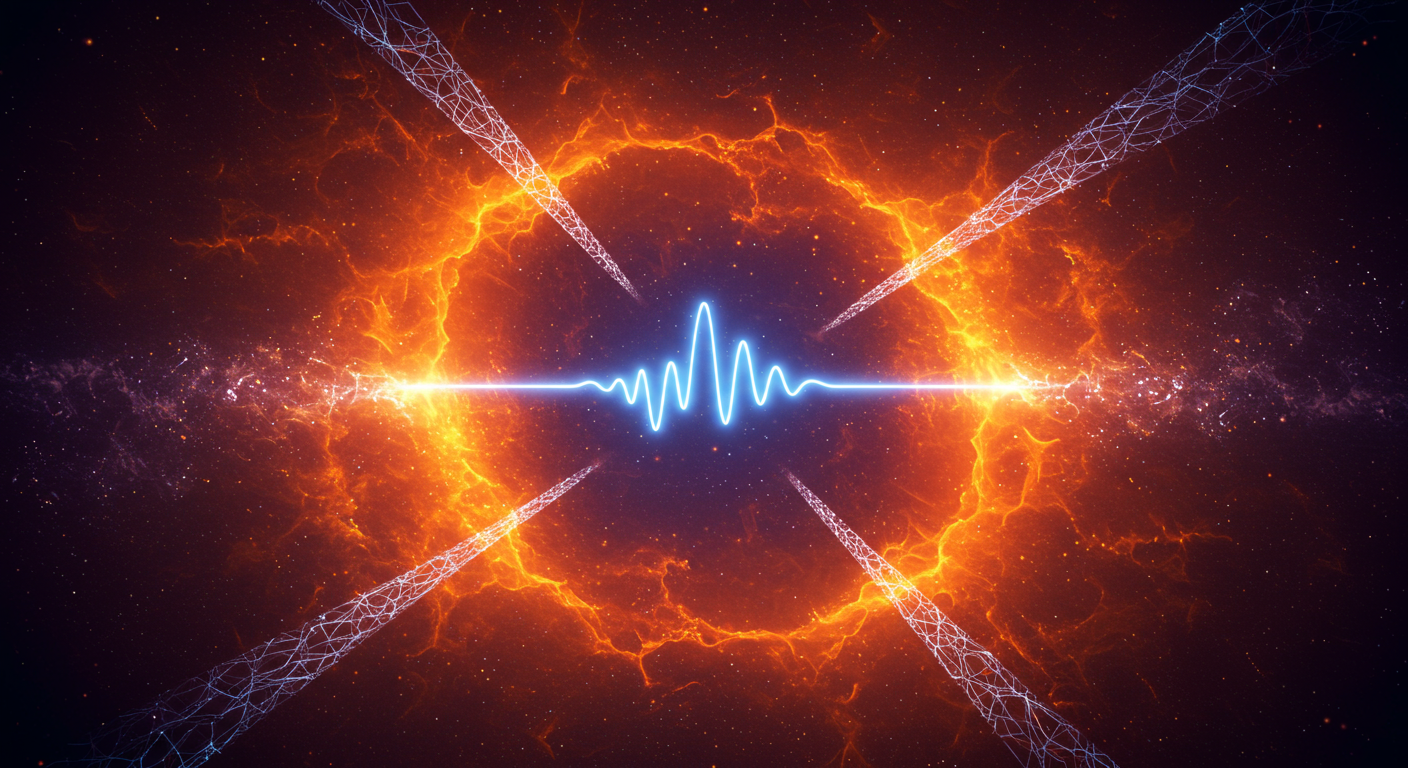Sky-averaged 21-cm signal extraction using multiple antennas with an SVD framework: the REACH case

Detecting the faint whispers from the Cosmic Dawn and the Epoch of Reionization via the sky-averaged 21-cm signal is one of the most formidable challenges in modern cosmology. In our paper, “Sky-averaged 21-cm signal extraction using multiple antennas with an SVD framework: the REACH case”, we introduce a powerful new strategy to overcome this challenge, tailored for experiments like the Radio Experiment for the Analysis of Cosmic Hydrogen (REACH). The core problem is that the cosmological signal is buried beneath astrophysical foregrounds, primarily Galactic synchrotron emission, which are four to six orders of magnitude brighter. The situation is complicated by the instruments themselves; the frequency-dependent response (chromaticity) of an antenna beam can imprint complex spectral structures onto the intrinsically smooth foregrounds, creating contaminants that can mimic or mask the cosmological signal. This issue was brought to the forefront by the tentative detection from EDGES (10.1038/nature25792), which sparked intense debate about potential contamination by unmodeled instrumental systematics.
A Multi-Antenna, SVD-Powered Framework
To robustly separate the signal from the foregrounds, our work builds upon a powerful data analysis framework that uses Singular Value Decomposition (SVD). Instead of assuming a simple polynomial model for the foregrounds, this method derives an optimal set of basis functions, or “modes,” directly from a large set of realistic, simulated beam-weighted foregrounds. Previous studies demonstrated that this approach is highly effective, for instance by fitting data from multiple time slices to leverage the time-variation of the foregrounds against the constant cosmological signal (10.1047/1538-4357/ab9b2a).
This paper, led by [Anchal Saxena], introduces a crucial new dimension to this strategy: the simultaneous analysis of data from multiple, structurally different antennas. The key insight is that while each antenna sees the same sky and the same universal 21-cm signal, its unique chromatic beam pattern will interact with the bright foregrounds in a different way. By jointly fitting the data from different antennas and enforcing the constraint that the extracted 21-cm signal must be identical across all of them, we can more effectively break the degeneracy between the cosmological signal and the antenna-specific foreground contamination.
Stress-Testing the Methodology
To validate this approach, we conducted extensive simulations for the REACH experiment, considering three distinct antenna designs (dipole, conical log spiral, and sinuous). We tested the framework against two increasingly realistic scenarios:
- A Simple Foreground Model: Here, we assumed a constant spectral index for the foreground emission across the entire sky.
- A Detailed Foreground Model: This more challenging model incorporated a spatially varying spectral index, derived from real sky maps (10.1111/j.1365-2966.2008.13376.x), which introduces additional complex, frequency-dependent structures into the observed data.
Results: The Power of Diversity
Our findings demonstrate the profound impact of the multi-antenna approach. While using multiple time slices with a single antenna was sufficient to recover the signal accurately for the simple foreground model, this was not the case for the more realistic scenario.
When confronted with the detailed foreground model, a single-antenna analysis failed to recover the input signal accurately, yielding a significantly biased result and large uncertainties. This highlights the critical danger of subtle systematic effects corrupting a measurement. However, by simultaneously fitting data from two or three different antennas, the framework’s performance improved dramatically. The joint analysis successfully mitigated the bias and reduced the uncertainty on the extracted 21-cm signal by a factor of 2-3.
This work, a collaboration including Eloy de Lera Acedo and Will Handley, establishes that employing a diversity of antenna designs is not just a hardware redundancy, but a powerful software-enabled technique for systematic mitigation. It provides a clear and robust path forward for REACH and other global 21-cm experiments to confidently extract the elusive signal from the dawn of the first stars.


Content generated by gemini-2.5-pro using this prompt.
Image generated by imagen-3.0-generate-002 using this prompt.